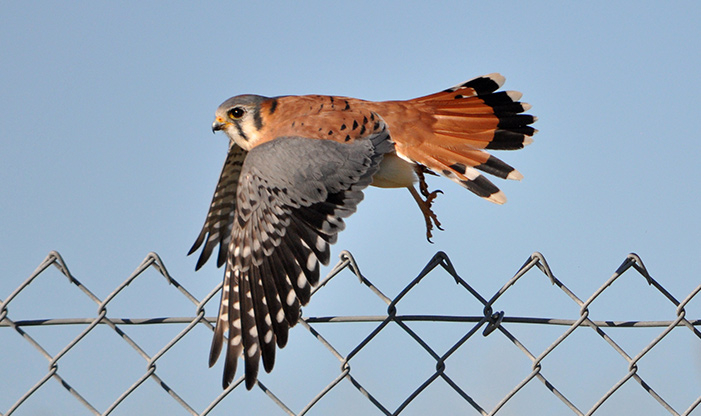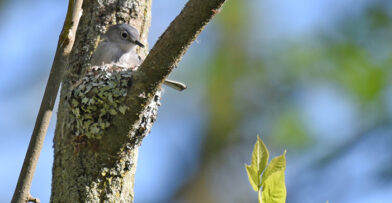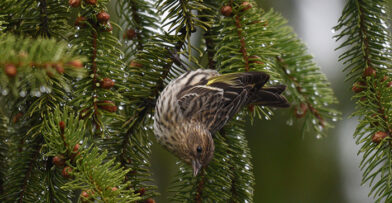When imagining a bird of prey, many people probably envision a large bird such as a Bald Eagle. But some fierce predators, like the American Kestrel, come in small packages.
Unique in Speed, Size, and Coloration
American Kestrels are the smallest falcon species in North America, weighing in at 3-5 ounces. That’s the same as a deck of cards! All falcons are known for their speed, and American Kestrels are no different. Their aerodynamic shape and stiff feathers allow them to reach speeds up to 100mph. This is important while hunting prey in flight, such as grasshoppers or sparrows.
Kestrels also have a rare ability in the raptor world to hover. They remain stationary in mid-air just by using their wings. Hovering takes a lot of energy, but it can come in handy when hunting small mammals such as voles, which might disappear into burrows.
American Kestrels are often seen atop fence posts looking out over an open field, or perched on telephone wires along our roadways. Whether in a rural area or in an urban setting, they stand out with their brightly colored plumage. They are similar in size to doves. But, a characteristic bobbing of their head and tail helps you identify them. American Kestrels are partial migrants, so instead of migrating to the same location each winter, they might only move if the weather and prey conditions demand it.
Declining Kestrel Populations
In the spring when American Kestrels are getting ready to nest, they look for tree cavities or human-made nest boxes. The U.S. Geological Survey Breeding Bird Survey data indicates that, since 1960, American Kestrel populations have been steadily declining across North America. In Wisconsin alone, the data shows a 41% decline from 1961 to 2017. If you are interested in installing and monitoring a nest box in your yard, you can provide a necessary home for kestrels. You will also be contributing to data being collected by the American Kestrel Partnership.
Our Raptor Program has one of these impressive falcons. Since American Kestrels are sexually dichromatic (sexes differ in color), ours is easy to distinguish. Malary, our female, is rufous orange with black barring across her wings, tail, and body. The male American Kestrel has slate blue wings and a distinctive black bar at the bottom of otherwise rufous orange tail. Malary came to us as a young bird that was accidentally imprinted by humans. She now makes her home at the Center as a raptor ambassador!


